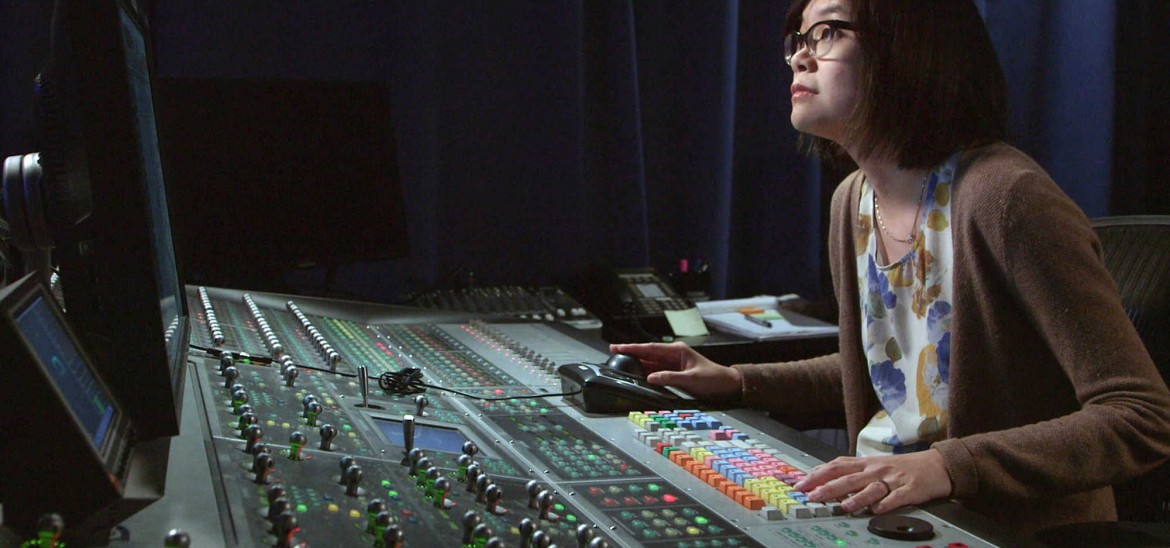Into Film Clubs
Find out everything you need to know about starting an Into Film Club.



Whether it's the sound of a lightsaber in the Star Wars films, or the first time the T-Rex is heard in Jurassic Park, sound has been a key element in cinema's most memorable stories. An investigation into the history of sound in cinema, Making Waves: The Art of Cinematic Sound is a highly educational and equally entertaining celebration of film sound and the invaluable work of sound recorders, who capture the sound on set or in post-production; sound designers, who create or modify sound to best represent the action on screen, and sound editors, who are responsible for seamlessly piecing the sound together. Taking a close look at the expertise and the experts that work meticulously to bring a director's vision to life, the documentary highlights the importance of recognising film as an audio-visual medium.
Directed by veteran sound editor Midge Costin, known for working on big productions such as Armageddon, Making Waves: The Art of Cinematic Sound delves into the history of sound by spanning its birth in early films to the seemingly endless possibilities digital technology offers modern cinematic storytelling.
Featuring interviews with some of Hollywood's biggest names (Steven Spielberg, Barbara Streisand, George Lucas, to name a few) and the skilled sound experts who have worked behind the scenes on some of cinema's most renowned creations, the film calls attention to the importance of each member of the crew, no matter the size of their role, and the importance of their collaboration in creating the final product.
Here we explore some of the most surprising and fascinating topics and landmarks in film history that the documentary digs into:
Many of us find it difficult to imagine watching a film without sound. With the exception of silent films, sound in film is something many of us take for granted. The first ‘talkie' feature film is widely considered to be The Jazz Singer (1927), this means that in addition to music and sound effect this was the first time a film also contained dialogue. This huge advancement led to further experimentation with how to depict a wider variety of characters through sound - but how do you portray a fantastical character that is neither animal nor human? Sound engineer Murray Spivack is credited for pioneering sound design when he worked on King Kong in 1933. Faced with the challenge of depicting the 18-foot gorilla, he visited zoos and recorded several animals, slowing down different roars and screeches to create the iconic monster.
One of the most enjoyable and intriguing parts of the documentary is the revelation that diegetic sound, meaning sound that derives from the action taking place on screen, has sometimes been fabricated through surprising sources. To create characters and worlds that are believable, sound recorders and engineers capture sounds and use them to enhance what is being depicted. Examples of this include the sound of the planes in Top Gun. The sound of the planes were combined with recordings of the roars of lions to amplify the sound of the powerful engines. One of the most humorous revelations relates to the beginning of what is now known as Foley sound, which are sound effects created with ordinary objects. After the shooting of the historical epic Spartacus, the crew realised that the soldier's armour sounded like tin pots! Sound effect artist Jack Foley came up with a quick solution - using his own keys, he fixed the sound in post-production, creating a sinister opening to the battle scene and pioneering the craft of Foley sound.
Perhaps due to her own experience, director Midge Costin pays close attention to some of the challenges faced by women working in the sound department. Some of the women featured in the film discuss the sexism they experience in their jobs, with one of the most common responses to their roles being surprise at their capabilities with complex equipment and that they work on action films that are often perceived to be for a 'male audience'. The film responds to these comments by acknowledging and celebrating the dedication and huge contribution women editors and engineers have made to the craft of film. Some of the several experts featured in the film in-clude sound engineer Lora Hirschberg, sound designer and editor Cecelia Hall and re-recording mixer Anna Behlmer.
Also including clips of some of the most outstanding uses of sound in film as well as accessible explanation of what each sound term means, Making Waves: The Art of Cinematic Sound is an excellent introduction to this invaluable aspect of film.
Making Waves: The Art of Cinematic Sound will be released in selected cinemas on 1 November.
Viewing 4 of 4 related items.

Find out more about our streaming service, designed specifically for UK schools.